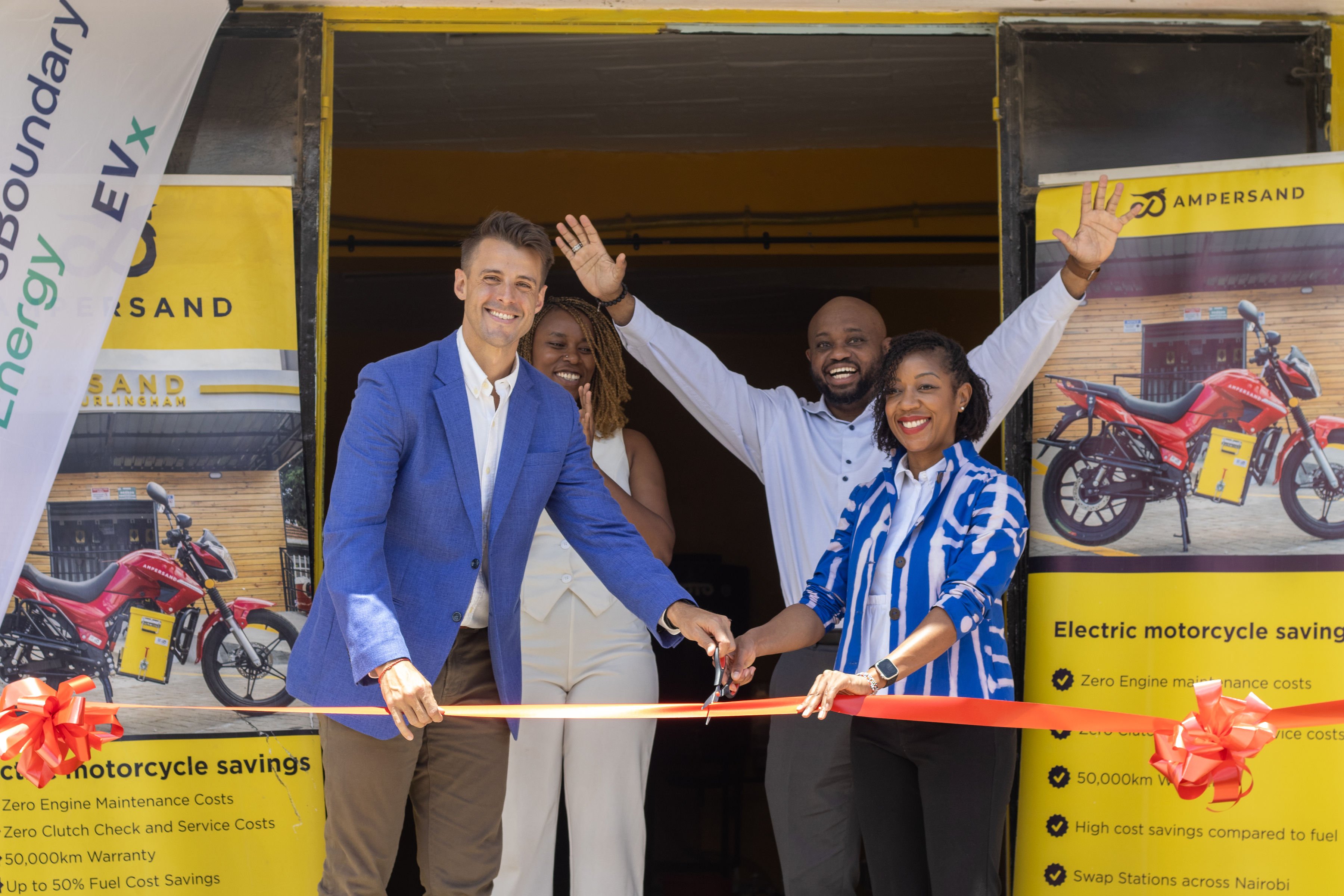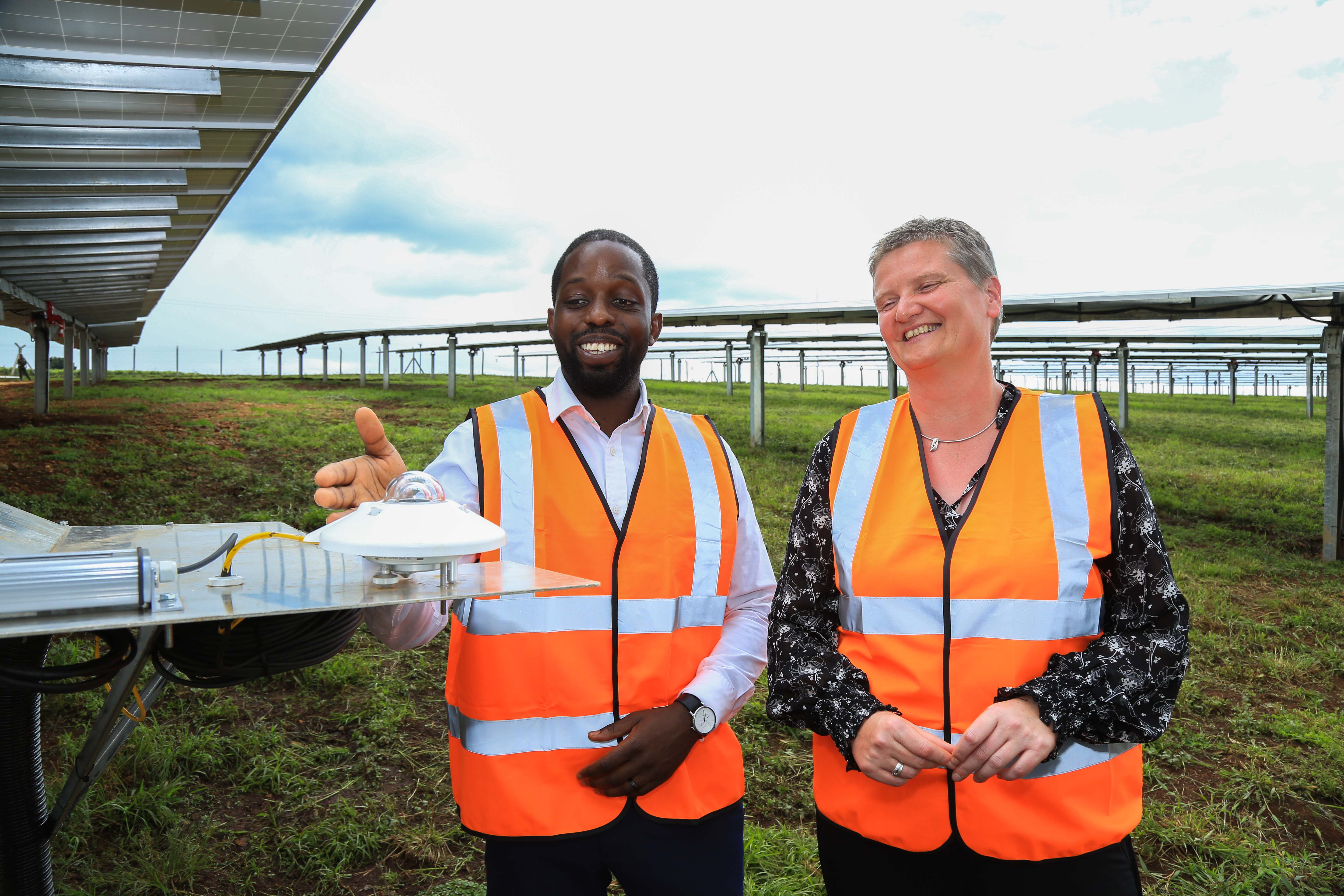
Kenya charges ahead with approval of first solar-to-charging station license
Kenya has issued its first license for a solar-powered electric vehicle charging station, marking a regulatory breakthrough that could accelerate the country's transition to electric transport
Kenya has issued its first license for a solar-powered electric vehicle charging station, marking a regulatory breakthrough that could accelerate the country's transition to electric transport
CrossBoundary Energy has secured a pioneering license for a solar-to-charging station in Kitengela. The approval signals growing regulatory sophistication in Kenya’s e-mobility sector and offers a potential pathway for scaling charging infrastructure across the country.
The accelerating opportunity for electric two-wheelers in Kenya
With only 10% of Kenya’s workforce in formal employment, many young people struggle to find stable jobs with decent earnings. The bodaboda (motorbike taxi) sector has become a vital livelihood option for many young people.
Electric two-wheelers (E2Ws) offer these riders unprecedented opportunity: in comparison to fuel-powered motorcycles, E2Ws significantly reduce operating costs, which is the primary concern for riders working on thin margins. Their simpler design reduces operational and maintenance costs, making them an appealing option for Africa’s transportation sector.
A rider’s perspective
A twenty-eight-year-old rider we interviewed cut his daily operating costs by over 50% by running his bodaboda on electricity instead of petrol.
The rider owns a small fleet of motorcycles in Nairobi, including three E2Ws, and employs five riders while operating an E2W himself. He initially started with an internal combustion engine motorcycle and switched to an electric model after hearing about the benefits from his peers. Since the switch, his daily charging costs average Ksh 300-400 ($2.50) per day, compared to up to Ksh 1,000 ($7.75) for the same on a petrol bike. These savings are helping him pay off his financing while supporting his young family.
Navigating Kenya’s uncharted EV regulatory
The regulatory framework: All public charging stations must obtain an electricity retail supply license before installation. The governing regulation is the Electric Vehicle Charging and Battery Swapping Infrastructure Guideline (effective September 1, 2023).
- Challenges in the guidelines: While the regulations allow for “chains of charging stations,” each station requires a separate retail supply license. This creates duplication and delays – even two charging stations at the same location may need separate permits. This approach risks slowing mass deployment, particularly with underdeveloped interoperability standards.
- County-level breakthrough: Kajiado County offered CrossBoundary Energy a blanket no-objection certificate for captive solar plants tied to charging stations. This eliminates the need to secure individual approvals for each new solar system.
Unlocking mass rollout of charging station infrastructure: Affordable, predictable charging costs are the strongest stimulus for mass adoption. These savings improve livelihoods and expand the pool of financeable E2W buyers. For investors, lower charging costs create a virtuous cycle – increased EV uptake raises charging station utilization, improving returns and justifying faster network expansion.
The 2023 Guidelines recommend that charging infrastructure should be strategically distributed based on urban density and travel corridors, ensuring plentiful availability within cities and at regular intervals along major highways to support both every day and long-distance electric mobility. Some of the charging station installations may be in areas with no power grid or where power supply suffers frequent interruption – thereby requiring integration of solar power generation with the charging station.
Kenya could simplify licensing by shifting from full retail supply licenses to combined solar generation and charging station licenses. Incentivizing interoperability would enhance user convenience, attract investment, and align with global best practices from advanced EV markets.
E2W ownership: Access to E2W financing has become a decisive enabler of Kenya’s e-mobility transition. Fintech-driven e-mobility companies are bridging the affordability gap with pay-as-you-ride models. Digital repayment structures linked to daily earnings eliminate high upfront costs for riders. With just 10-30% cash deposits, operators can acquire E2Ws while maintaining predictable expenses. This financing approach not only accelerates adoption among low-income and informal-sector riders but also creates an investable, data-rich asset class for lenders and fleet financiers.
Market implications as regulations evolve
Regulatory developments such as the Electric Vehicle Charging and Battery Swapping Infrastructure Guidelines underscore Kenya’s readiness to scale innovative e-mobility solutions, with the country positioned to expand charging infrastructure following CrossBoundary Energy’s multi-site approval in Kajiado County. However, the success of Kenya’s Draft National E-Mobility Policy and Energy Transition Plan hinges on pricing regulations for both fuels and electricity.
While EPRA’s pump-pricing formula exposes petrol operators to volatile global crude prices and foreign exchange fluctuations, electricity pricing for charging stations structured through dedicated low-cost grid tariffs and behind-the-meter generation offers predictable, lower per-kilometer costs that make locally sourced solar charging increasingly attractive for E2W operators.
Looking forward
Despite regulatory complexities, projects like CrossBoundary Energy’s solar-to-charging station are positioned to accelerate Kenya’s transition toward net zero as policy frameworks evolve. Each investment in EV infrastructure generates employment opportunities, reduces operational costs for transport operators, and improves urban air quality.
The e-mobility transition is even more urgent in regions beyond Kenya, where electrical grids rely heavily on fossil fuels and suffer from frequent outages. In these areas, combining solar power with EV charging infrastructure provides a critical double benefit: reducing transportation emissions while simultaneously bypassing unreliable, carbon-intensive grid electricity.





